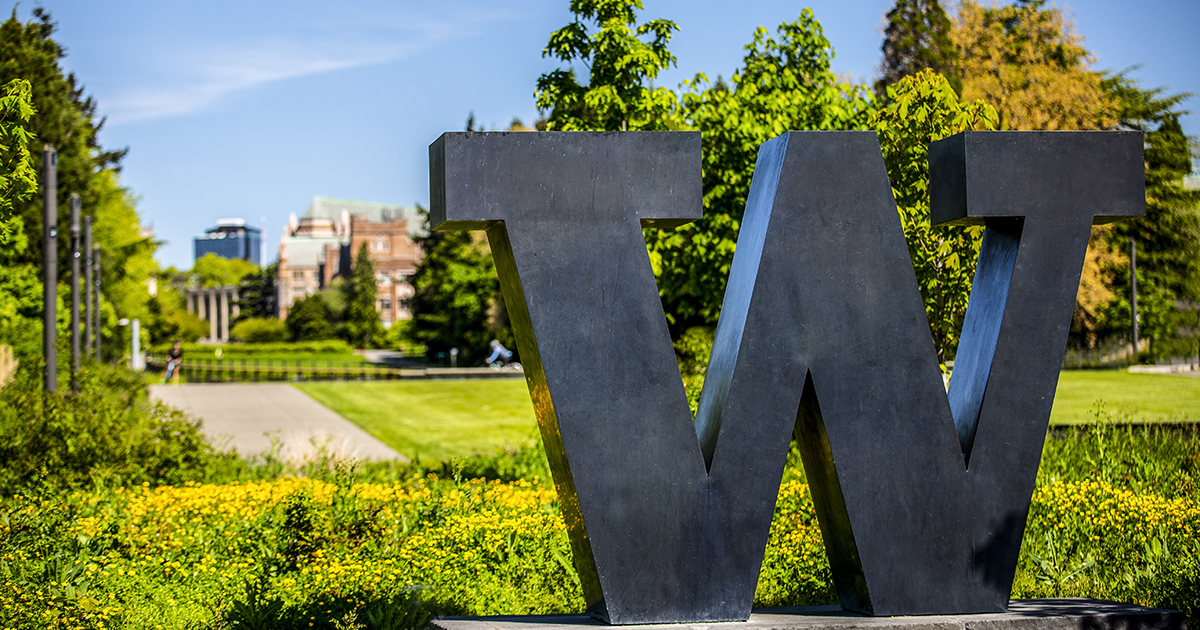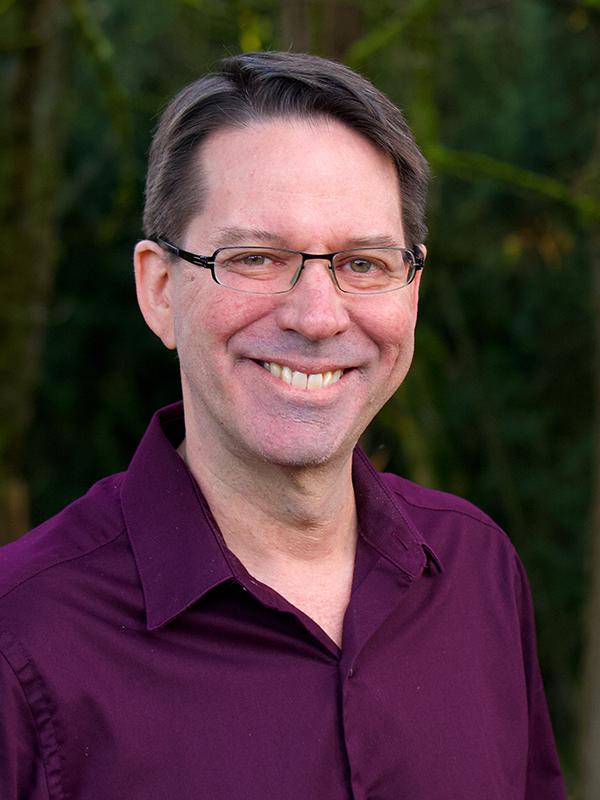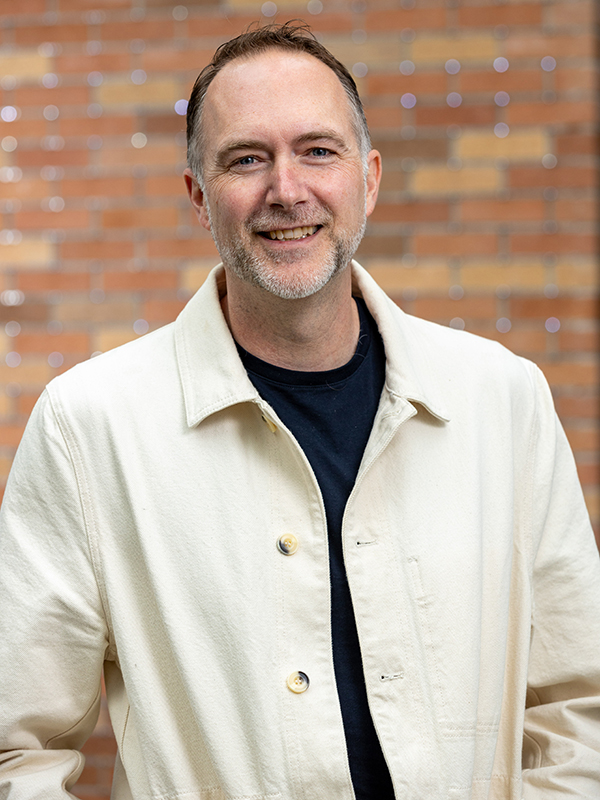Each year, the Association for Computing Machinery (ACM) recognizes the top 1 percent of its members who have made notable contributions to the field of computing science and technology as ACM Fellows.
Allen School professors Brian Curless and Jeffrey Heer were among the 55 ACM fellows who will be recognized at a ceremony in June in San Francisco, California. The 2024 inductees’ contributions range from 3D scanning to interactive machine learning and much more. Their work has helped transform how we use computing technologies today.
Brian Curless: “For contributions to 3D shape and appearance capture and reconstruction and to computational photography.”
Even before he joined the Allen School faculty in 1998, professor Brian Curless has been at the forefront of research into computer graphics and vision. In the ACM SIGGRAPH’s Seminal Graphics Papers Volume 2, a 2023 SIGGRAPH 50th anniversary collection of pioneering papers, he contributed six of the 88 featured papers. He co-directs the UW Reality Lab, alongside colleagues Steve Seitz and Ira Kemelmacher-Shlizerman, and is also a part of the Allen School’s Graphics and Imaging Laboratory (GRAIL).
The ACM commended Curless for his “contributions to 3D shape and appearance capture and reconstruction and to computational photography.”
“It is an incredible honor to be named an ACM Fellow,” Curless said. “This recognition is as much mine as it is the amazing collaborators, both at the Allen School and beyond, that I’ve worked with over the years researching computational photography, 3D scanning and more.”
Curless’ work has helped lay the groundwork for major milestones in 3D scanning research. He invented what is now the standard for merging range images together to reconstruct 3D surfaces such as the ridges and scales in a detailed dragon model. In addition, previous methods for extracting range data from optical triangulation scanners, which use lasers to shine light on an object and then measure the reflection to estimate its shape, were often not accurate for surfaces that are curved, discontinuous or had varying degrees of reflectance. Curless introduced a new and more accurate method using spacetime analysis. His volumetric 3D reconstruction research has been used for feature film development, and has since then been incorporated into Google’s Tango augmented reality (AR) computing platform and Microsoft’s Hololens.
The volumetric reconstruction method was also key to the success of the Digital Michelangelo Project, the first, detailed 3D computer archive of the Renaissance artist’s sculptures including the statue “David.” The project led to more research into using 3D scanning for archaeological preservation.
His work in 3D scanning technology extends beyond digitizing artwork. Curless has pioneered methods for using large 3D datasets to create accurate human body models to fit the general population, ushering in new research in data-driven human body shape modeling. Further, he and collaborators combined 3D scanning with traditional photography to introduce a new paradigm — surface light fields — to concisely represent the view-dependent appearance of objects.
Outside of 3D shape scanning, Curless has made strides in computational photography. He helped develop the interactive digital photomontage method, a technique for combining multiple images together without visible seams. The technique was featured in Adobe Photoshop CS4 as well as in Google Maps to create satellite imagery. Its interface for stitching together the best parts of photos has led to Google Pixel phone’s “Best Take” feature and “Photomerge Group Shots” in Adobe Photoshop Elements 10.
Curless, along with his collaborators, also introduced a new method for solving the matting problem, or how to extract foreground elements from a background image. He has taken this technique further with real-time background matting for streaming video.
In addition to being named an ACM Fellow, Curless has also received the National Science Foundation CAREER Award, Alfred P. Sloan Foundation Faculty Fellowship and the UW ACM Teaching Award.
“Brian is a pioneer in 3D shape scanning and computational photography,” said Seitz. “He invented techniques that became widely used both in academia and industry, and it’s amazing to see him recognized by this major honor.”
Jeffrey Heer: “For contributions to information visualization, human-centered data science and interactive machine learning.”
Allen School professor Jeffrey Heer, who co-directs the UW Interactive Data Lab alongside colleague Leilani Battle, has published over 120 peer-reviewed papers and has developed some of the most popular open-source visualization tools used by developers around the world. Heer’s interest in visualization began during his undergraduate studies at University of California, Berkeley, and since then, his work has already helped change the way that people interact with data, charts and graphs. But for Heer, “there’s still so much to do.”
“I’m honored to be named an ACM Fellow, and I am particularly grateful to my amazing students and collaborators over the years,” said Heer, who holds the Jerre D. Noe Endowed Professorship in the Allen School. “Whether visualizing complex information, wrangling data into shape, authoring analyses or making sense of statistical and machine learning results, together we’ve helped make it easier for people to work with, make sense of and communicate data more effectively.”
The ACM recognized Heer for “contributions to information visualization, human-centered data science and interactive machine learning.”
Heer is best known for his work on interactive information visualization. Building interactive visualizations requires knowledge in fields such as user interface development, graphic design as well as algorithmic implementation. Over the years, Heer and his collaborators introduced widely-adopted visualization languages such as Prefuse, Protovis, D3, Vega, Vega-Lite and Mosaic that have become the standard in fields like industry, data science and journalism.
These data visualization tools have built the foundation for other research from new interactive tools for exploratory data analysis to automating visualization design and recommendation. His work has had lasting impact; he has won three consecutive Test of Time Awards for papers published in IEEE Transactions on Visualization and Computer Graphics (IEEE VIS). In 2020, he was recognized for his work on narrative visualization, in 2021 for D3 that made data visualization more mainstream and in 2022 for helping data analysts understand challenges they face in their workflows. Heer’s research has helped push the field of interactive visualization from simple graphs to more complex visualizations that are now easier to build.
Heer’s work, however, is not limited to visualization. He has collaborated with domain scientists on ways to use data analysis in different fields from studying red harvester ant colonies to understanding the development and well-being of transgender children. Alongside his collaborators, Heer has combined natural language processing, HCI and visualization for projects such as designing new mixed-initiative language translation technologies and identifying cycles of opioid addiction and recovery in online patient-authored text. Outside of research, Heer co-founded the company Trifacta, which provides interactive tools for scalable data transformation that was acquired by Alteryx in 2022.
“I am incredibly excited that Jeffrey Heer is being recognized by the ACM for the tremendous impact he has had in the areas of Visualization and Human-Computer Interaction,” said Maneesh Agrawala, computer science professor at Stanford University. “His work has opened new directions for research on things like narrative in visualization, data preparation for analysis and grammars for visualization. It has also had immense impact beyond research with his open source tools like D3 and Vega regularly used by developers worldwide.”
Since joining the Allen School faculty in 2013, Heer has received the ACM’s Grace Murray Hopper Award, the 2017 IEEE Visualization Technical Achievement Award and Best Paper Awards at the ACM Conference on Human Factors in Computing (CHI), EuroVis and IEEE InfoVis conferences. He was also inducted into the IEEE Visualization Academy in 2019 — one of the most prestigious honors in the field of visualization.
Read more about the 2024 ACM Fellows.




